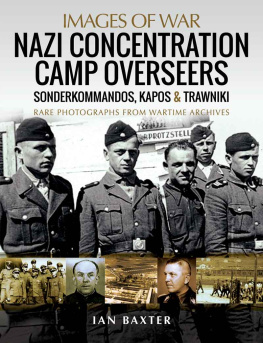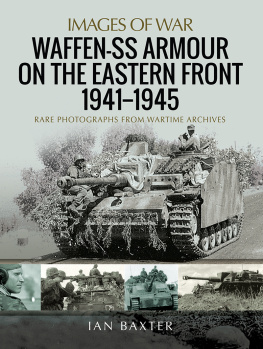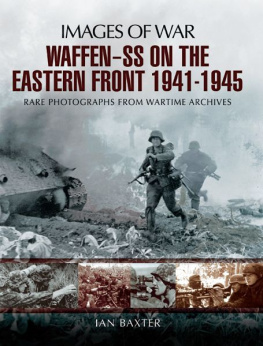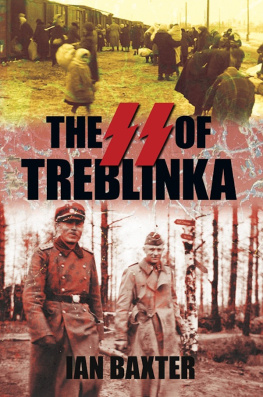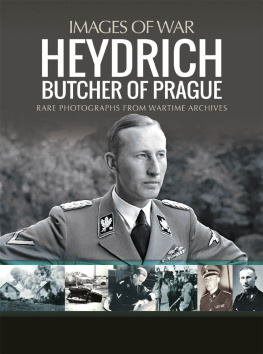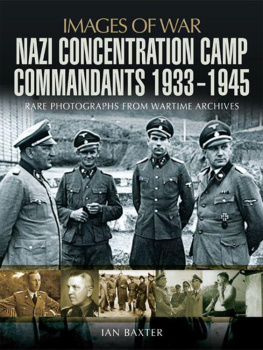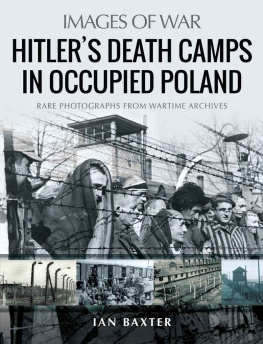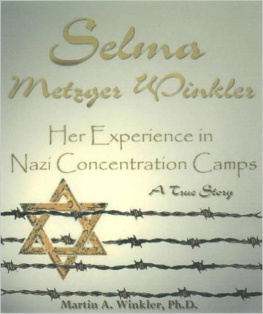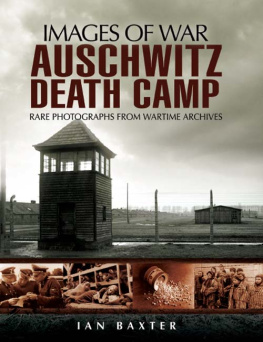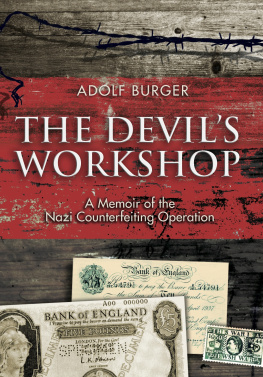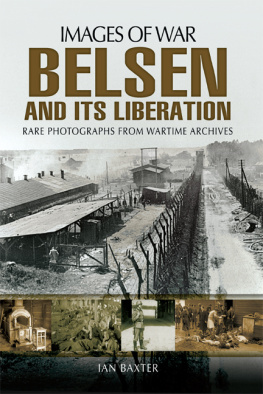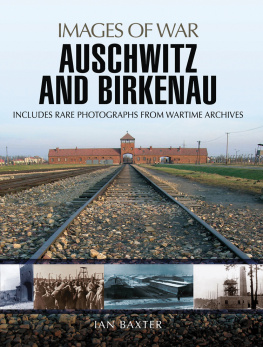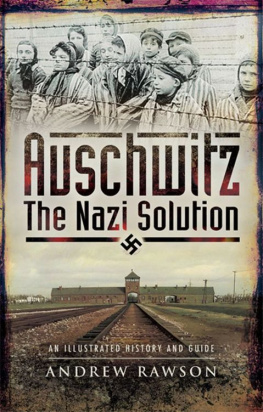Pagebreaks of the print version

IMAGES OF WAR
NAZI CONCENTRATION CAMP OVERSEERS
SONDERKOMMANDOS, KAPOS AND TRAWNIKI MEN
RARE PHOTOGRAPHS FROM WARTIME ARCHIVES
Ian Baxter
First published in Great Britain in 2021 by
PEN & SWORD MILITARY
an imprint of
Pen & Sword Books Ltd 47 Church Street
Barnsley
South Yorkshire
S70 2AS
Copyright Ian Baxter, 2021
ISBN 978-1-52679-995-1
ePUB ISBN 978-1-52679-996-8
Mobi ISBN 978-1-52679-997-5
The right of Ian Baxter to be identified as author of this work has been asserted by him in accordance with the Copyright, Designs and Patents Act 1988.
A CIP catalogue record for this book is available from the British Library.
All rights reserved. No part of this book may be reproduced or transmitted in any form or by any means, electronic or mechanical including photocopying, recording or by any information storage and retrieval system, without permission from the Publisher in writing.
Pen & Sword Books Limited incorporates the imprints of Atlas, Archaeology, Aviation, Discovery, Family History, Fiction, History, Maritime, Military, Military Classics, Politics, Select, Transport, True Crime, Air World, Frontline Publishing, Leo Cooper, Remember When, Seaforth Publishing, The Praetorian Press, Wharncliffe Local History, Wharncliffe Transport, Wharncliffe True Crime and White Owl.
For a complete list of Pen & Sword titles please contact
PEN & SWORD BOOKS LIMITED
47 Church Street, Barnsley, South Yorkshire S70 2AS, England
E-mail:
Website: www.pen-and-sword.co.uk
About the Author
I an Baxter is a military historian who specialises in German twentieth-century military history. He has written more than fifty books including Poland The Eighteen Day Victory March, Panzers In North Africa, The Ardennes Offensive, The Western Campaign, The 12th SS Panzer-Division Hitlerjugend, The Waffen-SS on the Western Front, The Waffen-SS on the Eastern Front, The Red Army at Stalingrad, Elite German Forces of World War II, Armoured Warfare, German Tanks of War, Blitzkrieg, Panzer-Divisions at War, Hitlers Panzers, German Armoured Vehicles of World War Two, Last Two Years of the Waffen-SS at War, German Soldier Uniforms and Insignia, German Guns of the Third Reich, Defeat to Retreat: The Last Years of the German Army At War 194345, Operation Bagration the Destruction of Army Group Centre, German Guns of the Third Reich, Rommel and the Afrika Korps, U-Boat War, and most recently The Sixth Army and the Road to Stalingrad. He has written over a hundred articles including Last days of Hitler, Wolfs Lair, The Story of the V1 and V2 Rocket Programme, Secret Aircraft of World War Two, Rommel at Tobruk, Hitlers War With his Generals, Secret British Plans to Assassinate Hitler, The SS at Arnhem, Hitlerjugend, Battle of Caen 1944, Gebirgsjger at War, Panzer Crews, Hitlerjugend Guerrillas, Last Battles in the East, The Battle of Berlin, and many more. He has also reviewed numerous military studies for publication, supplied thousands of photographs and important documents to various publishers and film production companies worldwide, and lectures to various schools, colleges and universities throughout the United Kingdom and the Republic of Ireland.
Chapter One
Prelude to Genocide
I t was as far back as March 1933 that the first concentration camp was built by the Nazis, called Dachau. The camp was a far cry from what later characterised the death camps, but even from the beginning its commandant, SS-Brigadefhrer Theodor Eicke, was determined to bring hatred and brutality to its inmates. Eicke was the architect, builder, and director of the concentration camp system and looked upon Dachau as a prototype for the concentration camps that followed. Its organisation, layout and construction were developed and ordered by Eicke.
To staff the camps Eicke requested a permanent unit that would be subordinate only to him: the SS-Wachverbnde (SS guard groups) were formed. The Wachvebnde were independent units within the SS, with their own ranks and command structure. The guards were required to follow Eickes demands with blind obedience.
By August 1937 the Dachau, Sachsenhausen, Buchenwald and Ravensbrck camps were operating in Germany. The next year, following the Anschluss, Eicke oversaw the building of Mauthausen in Austria.
Each camp was commanded by a Kommandant, who ran the camp with the aid of an adjutant and his command staff. Supervision of the inmates was the responsibility of the Rapportfhrer, who supervised the daily roll call and daily schedule. The prisoner barracks were operated by a Blockfhrer, who had one to two squads of SS soldiers to watch over the prisoners.
A period of unrestrained terror followed the invasion of Poland, particularly in what were known as the incorporated territories of Lublin and parts of the provinces of Warsaw and Krakow. In 1940 this area became known as the General Government. It was the dumping ground for all undesirables and enemies of the state. The German authorities established camps in Poland where these undesirables could be incarcerated. It was envisaged that these Poles would be a slave labour force.
Further concentration camps were erected, such as Auschwitz-Birkenau and appeals were made for staff.
These helpers Hiwis (an abbreviation of Hilfswilliger, volunteer) were far more numerous than the SS personnel. They mainly consisted of Sonderkommandos (special units), Kapos (prisoner functionaries) and Trawniki men (prisoners from East and Central European countries recruited to work for the SS).

A portrait photograph of SS-Obergruppenfhrer Theodor Eicke. Eicke had been made commandant of Dachau concentration camp in June 1933, and became a major figure in the SS. He was regarded the architect, builder, and director of the concentration camp system and ruled it with an iron fist. It was Eicke that introduced the infamous blue and white striped pyjamas that the inmates wore which came to symbolize the Nazi concentration camps across Europe. While it was Himmler who was ultimately in charge of the concentration camp system, it was Eicke who was the driving force inside the camps.

Aerial view of the Dachau concentration camp. Dachau was located on the grounds of an abandoned munitions factory near the medieval town of Dachau, 10 miles north-west of Munich. It was the first regular concentration camp established by the Nazis and was regarded by Himmler as the first camp for political opponents who were seen as an imminent threat to the new German government. Dachau was established on 20 March 1933. It served as a prototype for the concentration camps that followed. Its basic organisation, layout and construction were developed and ordered by SS-Obergruppenfhrer Theodor Eicke. ( USHMM, Ray Schmidt )

